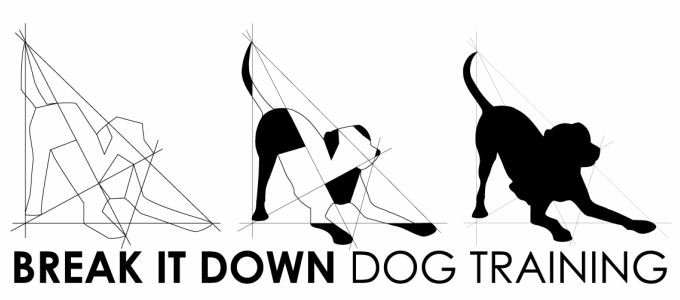It should also be noted that barking to guard territory is something dogs were intentionally bred to perform (not to mention guarding in general is a natural survival mechanism – read Jean Donaldson’s Mine! book on resource guarding in dogs for more information), so it is important to appreciate that this type of reaction is a normal and instinctual trait. The issue is that our contemporary lives no longer have the need for our dogs to protect our property, and our environmental setups (dog left unattended at the front window or in the front yard; living in close proximity to others; Amazon Prime; etc.) are setting our dogs up to fail to meet our modern standards.
In order to work through this issue, let’s break down what is going on to determine the sequence of behavior, what is triggering the reaction, and identify the reinforcing factor.
1. Someone or dog approaches the dog’s “property”
2. Dog senses (sight, sound, smell) that person or dog
3. Dog gives off initial “alert bark”
4. Dog continues barking and reacting toward the person or dog
5. Person or dog goes out of sense range
6. Dog begins to settle back down
In this case, the trigger is obviously the person or dog that the reacting dog finds threatening. The reinforcing factor (in other words: the reason the dog repeats the behavior) is that the people tend to go away while the dog is reacting.
Begin by managing the environment so that the dog has limited access to the trigger and reinforcing factor for at least two weeks. Close the front blinds, restrict unsupervised access to front yards and fences. During these two weeks, set up a plan to reinforce a behavior you want your dog to perform eventually when the trigger is reintroduced.
A good goal would be to have the dog target a specific area away from the reacting zone (e.g. bed or crate), and/or perform a specific task that is incompatible with the continuation of reacting towards the trigger (hand touch, lay down, give owner eye contact). These cues need to be completely reliable in the absence of the trigger. Once reliable, the trigger should be slowly reintroduced. Use an accomplice to repetitively walk past the property, or up to the door. The eventual goal sequence may look something like this:
1. Someone or dog approaches the dog’s “property”
2. Dog senses (sight, sound, smell) that person or dog
3. Dog gives off initial “alert bark”
4. Dog turns the other direction, happily races over and lays down on dog bed
5. Owner comes over and gives lots of high value treats and praise
6. Dog continues to wait on dog bed until owner’s release
7. Owner opens door to invite in guest (if applicable)
You will notice the first three steps are the same as before. There is no avoiding the fact that your dog senses people approaching your property; their senses are too fined tuned for that. Instead, the training begins right after the dog gives that initial alert bark (that they were bred to perform!), and directs them to a better patterned behavior that both dog and owner enjoy. With enough practice and patience, this will become an automatic response!
Training Protip: If barking persists even once your dog has learned the new territory reaction rules, systematically limit the reward you give for fewer and fewer barks.

 RSS Feed
RSS Feed